Pathologic properties of SOD3 variant R213G in the cardiovascular system through the altered neutrophils function
- PMID: 32004354
- PMCID: PMC6994104
- DOI: 10.1371/journal.pone.0227449
Pathologic properties of SOD3 variant R213G in the cardiovascular system through the altered neutrophils function
Abstract
The SOD3 variant, SOD3R213G, results from substitution of arginine to glycine at amino acid 213 (R213G) in its heparin binding domain (HBD) and is a common genetic variant, reported to be associated with ischemic heart disease. However, little is understood about the role of SOD3R213G in innate immune function, and how it leads to dysfunction of the cardiovascular system. We observed pathologic changes in SOD3R213G transgenic (Tg) mice, including cystic medial degeneration of the aorta, heart inflammation, and increased circulating and organ infiltrating neutrophils. Interestingly, SOD3R213G altered the profile of SOD3 interacting proteins in neutrophils in response to G-CSF. Unexpectedly, we found that G-CSF mediated tyrosine phosphatase, SH-PTP1 was down-regulated in the neutrophils of SOD3R213G overexpressing mice. These effects were recovered by reconstitution with Wt SOD3 expressing bone marrow cells. Overall, our study reveals that SOD3R213G plays a crucial role in the function of the cardiovascular system by controlling innate immune response and signaling. These results suggest that reconstitution with SOD3 expressing bone marrow cells may be a therapeutic strategy to treat SOD3R213G mediated diseases.
Conflict of interest statement
The authors have declared that no competing interests exist.
Figures
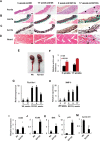
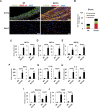
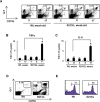

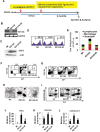

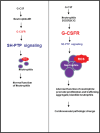
Similar articles
-
SOD3 Variant, R213G, Altered SOD3 Function, Leading to ROS-Mediated Inflammation and Damage in Multiple Organs of Premature Aging Mice.Antioxid Redox Signal. 2015 Oct 20;23(12):985-99. doi: 10.1089/ars.2014.6035. Epub 2015 Jun 2. Antioxid Redox Signal. 2015. PMID: 25927599
-
Superoxide Dismutase 3 R213G Single-Nucleotide Polymorphism Blocks Murine Bleomycin-Induced Fibrosis and Promotes Resolution of Inflammation.Am J Respir Cell Mol Biol. 2017 Mar;56(3):362-371. doi: 10.1165/rcmb.2016-0153OC. Am J Respir Cell Mol Biol. 2017. PMID: 27805412 Free PMC article.
-
Effects of a common human gene variant of extracellular superoxide dismutase on endothelial function after endotoxin in mice.J Physiol. 2007 Oct 15;584(Pt 2):583-90. doi: 10.1113/jphysiol.2007.140830. Epub 2007 Aug 23. J Physiol. 2007. PMID: 17717013 Free PMC article.
-
R213G polymorphism in SOD3 protects against bleomycin-induced inflammation and attenuates induction of proinflammatory pathways.Physiol Genomics. 2018 Sep 1;50(9):807-816. doi: 10.1152/physiolgenomics.00053.2018. Epub 2018 Jul 13. Physiol Genomics. 2018. PMID: 30004839 Free PMC article.
-
Regulation of neutrophil homeostasis.Curr Opin Hematol. 2007 Jan;14(1):3-8. doi: 10.1097/00062752-200701000-00003. Curr Opin Hematol. 2007. PMID: 17133093 Review.
Cited by
-
Role of copper and SOD3-mediated extracellular redox regulation in tumor progression.J Clin Biochem Nutr. 2024 Jul;75(1):1-6. doi: 10.3164/jcbn.24-14. Epub 2024 Apr 6. J Clin Biochem Nutr. 2024. PMID: 39070539 Free PMC article.
-
An Emerging Role of Defective Copper Metabolism in Heart Disease.Nutrients. 2022 Feb 7;14(3):700. doi: 10.3390/nu14030700. Nutrients. 2022. PMID: 35277059 Free PMC article. Review.
-
Effect of thermophilic bacterium HB27 manganese superoxide dismutase in a rat model of chronic prostatitis/chronic pelvic pain syndrome (CP/CPPS).Asian J Androl. 2022 May-Jun;24(3):323-331. doi: 10.4103/aja202157. Asian J Androl. 2022. PMID: 34747725 Free PMC article.
References
-
- Oury TD, Chang LY, Marklund SL, Day BJ, Crapo JD. Immunocytochemical localization of extracellular superoxide dismutase in human lung. Lab Invest. 1994;70(6):889–98. Epub 1994/06/01. . - PubMed
Publication types
MeSH terms
Substances
LinkOut - more resources
Full Text Sources
Other Literature Sources
Molecular Biology Databases
Miscellaneous

